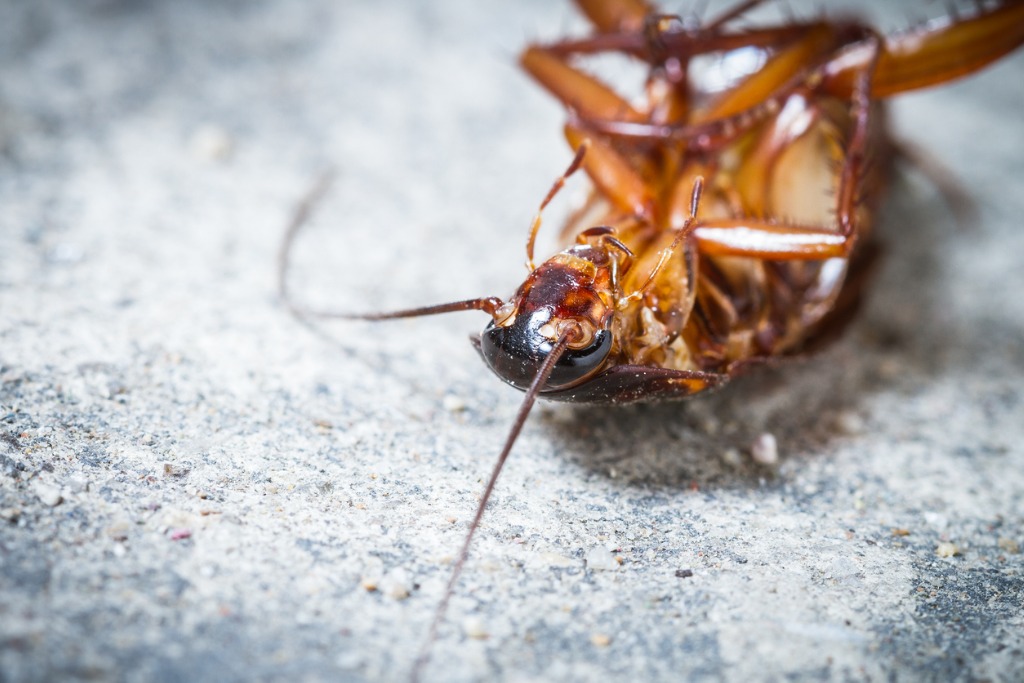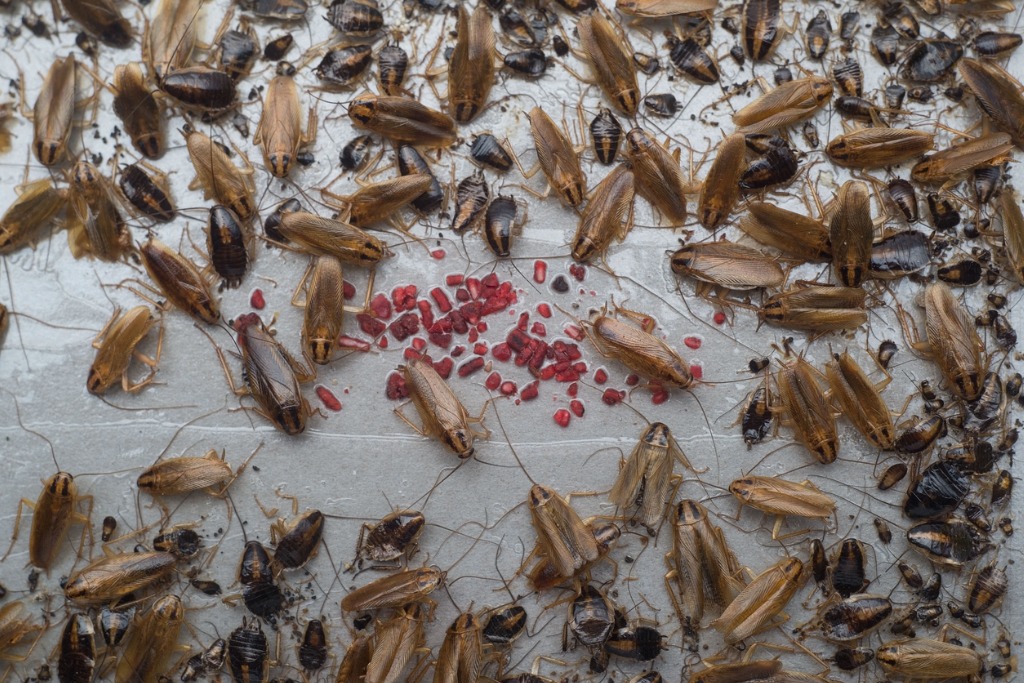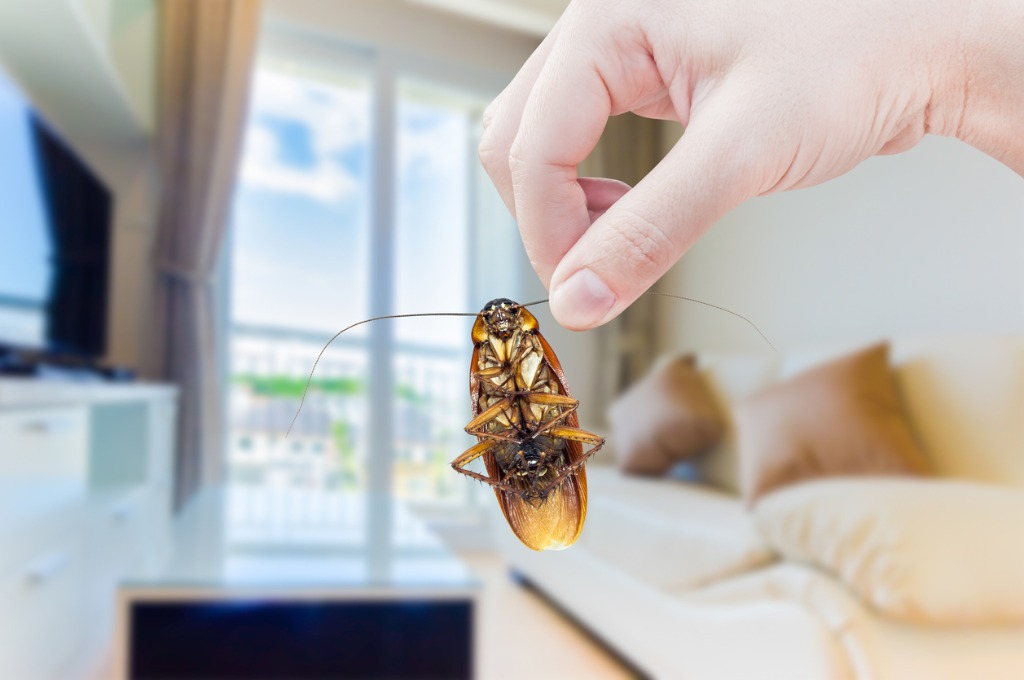They say cockroaches can survive a nuclear apocalypse, but just how long do these resilient critters live? In the dark corners of our homes, these creepy crawlers scuttle about, leaving us feeling uneasy and reaching for the nearest can of bug spray. But have you ever wondered just how long they stick around? Join us as we delve into the fascinating world of cockroach lifespans and uncover the secrets behind their seemingly eternal existence. Get ready to be surprised by what you thought you knew about these infamous pests!
Key takeaways
- Common cockroach species, like American and German cockroaches, have lifespans ranging from 6 months to 2 years.
- Lifespan varies among species, with larger cockroaches generally living longer, and some exceptional species reaching 5 years or more.
- Factors affecting cockroach lifespan include species, environmental conditions, temperature, predators, pest control measures, reproductive activity, and hygiene.
- Cockroaches go through three life stages: egg, nymph, and adult, with varying durations for each stage.
- Pest control efforts should target different life stages to effectively manage infestations.
- Cockroach lifespans are influenced by genetics and environmental factors, and research is ongoing to understand better and control these resilient pests.
What is the average lifespan of a common cockroach species?
The average lifespan of a common cockroach species, such as the American cockroach or the German cockroach, typically falls within the range of 6 months to 2 years. However, individual lifespans can vary depending on factors like environmental conditions, access to food and water, exposure to predators, and the implementation of pest control measures. Larger cockroach species generally tend to have longer lifespans compared to smaller ones, and some exceptionally large species may live up to 5 years or more under ideal circumstances.
Do all cockroach species have the same lifespan?

No, not all cockroach species have the same lifespan. The lifespan of cockroaches can vary significantly among different species. Larger species, such as the American cockroach (Periplaneta americana), tend to have longer lifespans, typically ranging from 1 to 2 years. In contrast, smaller species like the German cockroach (Blattella germanica) have shorter lifespans, usually around 6 months to 1 year. Some larger cockroach species, such as the Madagascar hissing cockroach (Gromphadorhina portentosa), can live considerably longer, with individuals potentially reaching 5 years or more under favorable conditions. The lifespan of a cockroach species is influenced by a combination of genetic factors, environmental conditions, and specific adaptations.
General Lifespan
Typical cockroach lifespan
The lifespan of a cockroach can vary depending on the species and environmental conditions. On average, most common household cockroach species, like the American cockroach (Periplaneta americana) and the German cockroach (Blattella germanica), have lifespans of about 6 months to 2 years. However, some larger species of cockroaches, such as the Madagascar hissing cockroach (Gromphadorhina portentosa), can live longer, up to 5 years or more.
Influential factors
Several factors can influence the lifespan of a cockroach:
- Species: Different species of cockroaches have varying lifespans. Smaller species tend to have shorter lifespans compared to larger ones.
- Environmental conditions: The availability of food, water, and suitable shelter plays a significant role in the lifespan of cockroaches. Adequate resources can lead to longer lifespans.
- Temperature: Cockroaches are ectothermic, which means their body temperature is regulated by their environment. Warmer temperatures generally accelerate their metabolism, which can lead to a shorter lifespan.
- Predators and pest control measures: The presence of natural predators like birds, lizards, or certain insects can significantly impact cockroach populations and reduce their lifespans. Additionally, pest control measures, such as baits and insecticides, can shorten their lives.
- Reproductive activity: Cockroaches reproduce quickly, and the constant energy expenditure associated with reproduction can reduce their overall lifespan.
- Hygiene and cleanliness: Clean environments with less food debris and clutter can discourage cockroach infestations and lead to shorter lifespans for individual cockroaches.
Species Lifespans
American Cockroach
The American cockroach is one of the largest common cockroach species. Its typical lifespan ranges from 1 to 2 years under favorable conditions. However, their lifespan can be shorter in less favorable environments or if they encounter predators or pest control measures.
German Cockroach
The German cockroach is a smaller species commonly found in households. These cockroaches have a shorter lifespan compared to larger species. Typically, their lifespan is around 6 months to 1 year, depending on environmental factors and the availability of food and shelter.
Oriental Cockroach
The oriental cockroach is another common household pest. They have a slightly longer lifespan compared to German cockroaches. Typically, oriental cockroaches live for about 1 to 1.5 years under favorable conditions.
Cockroach Lifecycle

Stages and durations
Egg Stage:
- Cockroach eggs are usually laid in protective cases called oothecae.
- The duration of the egg stage varies among cockroach species but generally lasts from a few weeks to a few months, depending on factors such as temperature and humidity.
Nymph Stage:
- After the eggs hatch, young cockroaches called nymphs emerge.
- Nymphs resemble miniature versions of adult cockroaches but are smaller and lack fully developed wings and reproductive organs.
- Nymphs go through a series of molts (shedding their exoskeleton) as they grow. The number of molts varies by species, but it’s typically 5-10 times.
- The duration of the nymph stage varies by species and environmental conditions. It can range from a few weeks to several months.
Adult Stage:
- Once nymphs have completed their molts and reached maturity, they become adult cockroaches.
- Adult cockroaches have fully developed wings (though not all species are capable of sustained flight) and reproductive organs.
- The lifespan of an adult cockroach varies by species and environmental conditions. As mentioned earlier, it can range from a few months to a few years.
Pest Control Implications
Lifespan’s role in pest control
- Reproduction and Population Growth: The lifespan of pests, such as cockroaches, directly impacts their ability to reproduce and grow their populations. Pests with shorter lifespans may reproduce more frequently, leading to faster population growth. Pest control measures often aim to disrupt this reproductive cycle by targeting not only the adults but also the eggs and nymphs.
- Resistance to Control Measures: Pests with longer lifespans may have a higher likelihood of developing resistance to common pest control methods, such as insecticides. Over time, repeated exposure to control measures can select for individuals with genetic resistance, making control efforts less effective. Pest management strategies need to take into account the potential for resistance development.
- Persistence of Infestations: The lifespan of pests can affect the persistence of infestations. Pests with longer lifespans may remain active and continue to reproduce for an extended period, making it more challenging to completely eliminate an infestation. In such cases, ongoing monitoring and control measures may be necessary to ensure successful pest management.
Targeted strategies
- Life Stage-Specific Control: Understanding the different life stages of pests is crucial for effective pest control. Targeted strategies may involve using insecticides or treatments that are effective against specific life stages, such as eggs, nymphs, or adults. For example, insect growth regulators (IGRs) can disrupt the development of nymphs and prevent them from reaching adulthood.
- Integrated Pest Management (IPM): IPM is an approach that combines multiple strategies to manage pests effectively while minimizing environmental impact. It involves using a combination of cultural, biological, and chemical control methods. By considering the lifespan of pests and their vulnerabilities at various stages, IPM programs can be tailored to specific pest species and situations.
- Monitoring and Inspection: Regular monitoring and inspection of infested areas can help identify the presence of pests at different life stages. This information can guide pest control efforts, allowing for timely intervention and targeting of the most vulnerable life stages.
- Sanitation and Habitat Modification: Pest control strategies should also focus on eliminating the factors that attract and support pest populations, such as food and water sources. Sanitation and habitat modification can disrupt the pest’s lifecycle by reducing its access to essential resources.
- Residual Treatments: For pests with longer lifespans, residual treatments may be necessary to control adults over an extended period. These treatments involve applying insecticides to areas where pests are likely to come into contact with the chemicals, such as along baseboards, cracks, and crevices.
Lifespan in Varied Environments

Environmental impact
The lifespan of various organisms, including both plants and animals, is profoundly influenced by the specific environmental conditions they inhabit. Environmental factors such as climate, habitat, pollution, and resource availability can have a significant impact on how long an organism lives.
For example, in more pristine and unpolluted natural environments, many species tend to have longer lifespans. These environments often provide a consistent supply of resources like food, clean water, and suitable habitats. Organisms in such settings can allocate more energy towards growth, reproduction, and defense against predators and diseases, leading to extended lifespans.
Conversely, in environments affected by pollution, habitat destruction, or resource scarcity, lifespans can be shortened. Pollution can directly harm organisms and disrupt ecosystems, leading to decreased longevity. Resource scarcity can force organisms to divert more energy toward obtaining essential resources, leaving less energy for growth and maintenance. Thus, organisms in degraded or stressful environments may have shorter lifespans due to increased competition, predation, and limited access to resources.
Urban vs. rural differences
Lifespan differences between urban and rural environments often reflect the variations in environmental conditions and lifestyle factors experienced by humans and other species.
In urban environments, the pace of life tends to be faster, and exposure to pollutants and stressors can be higher. As a result, people living in densely populated cities may face increased risks of certain health issues, such as respiratory problems, which can potentially reduce their lifespans. Additionally, urban wildlife may have shorter lifespans due to exposure to urban hazards like traffic, pollution, and limited access to natural habitats.
In contrast, rural areas often offer cleaner air, less noise pollution, and access to natural spaces, which can contribute to longer lifespans for both humans and wildlife. Rural lifestyles may involve more physical activity and access to fresh, locally sourced food, which can positively impact human health and longevity.
Debunking Lifespan Myths
Common misconceptions
- One fixed lifespan for all species: One of the common misconceptions about lifespan is the belief that every species has a predetermined and fixed lifespan. In reality, the duration of life varies widely among different species. While some may live only for a few hours or days, others can exist for centuries. Lifespan is influenced by a multitude of factors, including genetics, environmental conditions, and evolutionary adaptations.
- Human lifespan is always increasing: While it’s true that advances in healthcare and living conditions have led to substantial increases in human lifespan over the past century, it’s a misconception to assume that this trend will continue indefinitely. Scientific research suggests that there may be biological limits to how long humans can live, and further extensions of lifespan may become increasingly challenging to achieve.
Scientific clarifications
- Variability in lifespans: Lifespan is not a one-size-fits-all concept. It exhibits significant variability, both within and among species. While genetics contribute to the potential range of lifespan, individual lifespans are subject to various environmental and stochastic influences. This variability underscores the complexity of the factors that determine how long an organism or individual will live.
- Genetics and environment: Lifespan is the product of a dynamic interaction between genetic predispositions and environmental factors. While genetics can establish a general framework for potential lifespan, it is the environment, including diet, lifestyle, exposure to hazards, and access to healthcare, that plays a crucial role in shaping the actual lifespan of an individual.
- Quality of life vs. lifespan: It’s essential to distinguish between lifespan and quality of life. A longer lifespan does not guarantee a higher quality of life. Factors such as physical health, mental well-being, social connections, and personal satisfaction are equally, if not more, important determinants of overall well-being. Therefore, efforts to improve human and animal welfare should consider both longevity and quality of life as essential components.
Research and Future Studies
Areas for further research on cockroach lifespan
Future research on cockroach lifespan could explore various aspects, including the genetic, environmental, and ecological factors that influence the variability in lifespan among different cockroach species. Investigating the evolutionary adaptations, physiological mechanisms, and responses to contemporary environmental stressors can provide a comprehensive understanding of cockroach longevity. Furthermore, studying the trade-offs between life history traits and investigating the impact of pest control methods on cockroach lifespans can contribute to the development of more targeted and sustainable pest management strategies. Such research is essential for improving our ability to control cockroach infestations and for understanding the broader implications of cockroach biology in ecological and urban contexts.
Potential innovations in pest control
In the realm of pest control, future studies and innovations are poised to revolutionize the way we manage pest species, including cockroaches. From advanced biological control methods harnessing beneficial microbes and RNAi technology to the development of insect-specific pesticides and eco-friendly repellents, researchers are exploring a diverse range of approaches. AI-driven pest monitoring, genetic pest sterilization, and community engagement in citizen science initiatives all play a role in shaping a more effective, sustainable, and environmentally responsible future for pest management. These innovations hold the promise of reducing the reliance on traditional chemical pesticides, minimizing ecological impacts, and improving the overall quality of pest control practices.
Conclusion
Understanding the lifespan of common cockroach species is essential for effective pest control and prevention strategies. While there are over 4,000 species of cockroaches worldwide, the most common ones that invade human dwellings typically have a lifespan ranging from a few months to a couple of years. Factors such as environmental conditions, availability of food and water sources, and the effectiveness of pest control measures can greatly influence their longevity. By gaining knowledge about their lifespans, homeowners and pest control professionals can better tailor their efforts to manage infestations and minimize the risks associated with cockroach presence. Together, let us work towards creating clean and hygienic living spaces that are free from these persistent pests.
FAQs about Dealing with Mouse and Rat Infestations:
1. What factors influence the lifespan of cockroaches?
Several factors can influence cockroach lifespan, including environmental conditions (temperature, humidity), availability of food and water, exposure to predators, and pest control measures.
2. Can cockroaches live longer in certain environments?
Yes, cockroaches can live longer in environments that provide abundant food, water, and suitable shelter. Clean and well-maintained spaces are less conducive to cockroach survival, potentially shortening their lifespans.
3. Do cockroaches have a maximum lifespan?
Cockroaches, like many organisms, do not have a fixed maximum lifespan. Their potential longevity is influenced by both genetic and environmental factors. However, there may be practical limits to their lifespan determined by their species and circumstances.
4. How does temperature affect cockroach lifespan?
Warmer temperatures generally accelerate the metabolism of cockroaches, leading to faster growth and reproduction but potentially shorter lifespans. Cooler temperatures can slow their development and extend their lifespans.
5. Can pest control measures affect the lifespan of cockroaches?
Yes, pest control measures such as insecticides, baits, and predators can significantly impact cockroach lifespans. Effective pest control can reduce both the number of cockroaches and their individual lifespans, especially if it targets multiple life stages.

